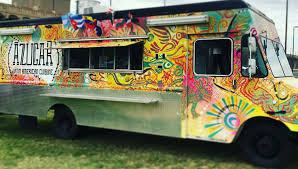Formerly associated with blue collar workers where they were parked outside of factories in working class areas, food trucks have gained acceptance and become popular among even “foodie snobs” world-wide. According to Google, “As of 2021, research firm IBIS World estimated there are more than 24,000 food trucks in the U.S. doing about $1 billion worth of business annually.”
Beginning in Rhode Island in 1872, a truck parked outside a newspaper office sold coffee, sandwiches, and pie to reporters working around the clock. In the 1950s the U.S. Army ordered mobile canteens to serve its bases. Construction sites soon followed suit.
Their foods represent the authentic local cuisine better than the restaurants of the area for a fraction of the price. If you aren’t interested in a candlelit meal on a linen tablecloth where the wait staff lifts the lid of your main courses off saying, “Voila, bon appetit,” food truck foods may be for you. Families on limited budgets with young kids on the go may be drawn to this kind of “dining out” as a convenient and fast alternative to cooking at home.
In the U.S., food trucks/vendors are required to acquire licenses from the municipalities in which they are working in order for the same food inspections and taxes that any restaurant receives. Licensing is in place in many European countries as well. Often restaurant owners see them as competition. Some food trucks come and go based on events such as summer fairs and concerts, whereas others are semi- permanent. They may move around based on special venues such as building projects in a city or military and cruise ship docking, for example. In our suburban area we see them parked at businesses during the noon hour. Not having to pay hefty rent on brick and mortar buildings is attractive for owners. It is a win/win situation for both owner and consumer.
What food trucks/vendors serve varies depending on local taste and demand. In the good ole continental USA, food trucks in cities began serving the typical fast food diet of hot dogs, burgers, fries, and sodas for a quick pick-me up to tourists and workers alike. Those basics are now replaced by healthier meals with fresh ingredients and meals for consumers with special dietary needs or wants, including vegan. It is not unusual to find food trucks selling lobster, ethnic foods such as Korean food, and all types of barbeque. Their menus can be as gourmet as any restaurant serves albeit more limited.
Food trucks are popular worldwide. The Caribbean is big on fried chicken that sits out all day in the intense heat (and I just wonder how it doesn’t give people food poisoning.) Sweet white crepes filled with Nutella are all the rage on western Europe’s street corners near popular tourist sites. It’s as fun to watch them being made as it is to eat them. Currywurst in Germany; falafel in Middle Eastern areas; cod in Portugal; Belgian waffles in Belgium. Corn-on-the-cob surprised me as a popular snack food in Beijing. Bags of steaming roasted chestnuts fascinated me at entrances to all major Roman piazzas near the gelato shops. In Stockholm you can get a “sandwich” filled with meat, veggies, and, yes, even mashed potatoes near a summer flea market. “Locally sourced” is the new buzz word people are gravitating to for fresh, local ingredients which owners of food trucks are incorporating into their menus.

Pupusas are El Salvador’s trademark food and can be found everywhere. Food trucks line both sides of the highway on the way to and from the airport. Their vendors want to catch you both coming into and leaving the country, I guess. Every kind of pupusa possible must be available. No Salvadoran eats pupusas without curtido (a cabbage slaw.) That would be like an American eating a burger without fries. Here, too, their menus have branched out to include arepas (stuffed corn tortillas), grilled meats, and the popular chocobananos (frozen banana dipped in chocolate.) Some even sell a 2 Go cocktail, but most likely you will drink Horachata, which looks like a weak chocolate drink but is actually a mixture of herbs and spices. Some food trucks specialize in vegan meals while others are vegetarian meals. The food trucks themselves are painted very bright and colorful to attract lots of attention.

Food trucks are here to stay around the world. Their popularity continues to grow for their convenience and diversity in menus.
(Photos courtesy of Google images)


